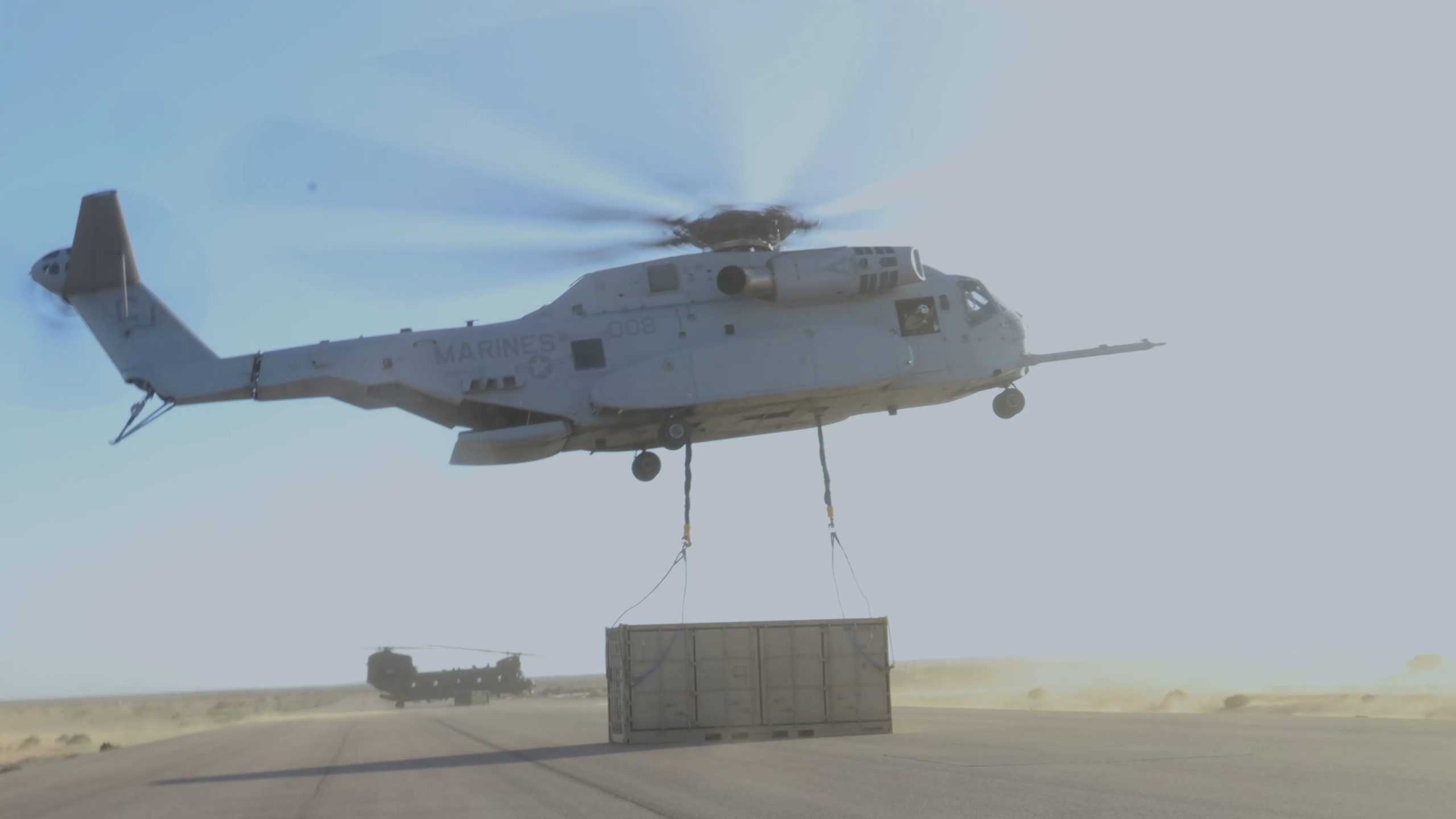By Robbin Laird
The Marines in focusing on EABOs have two key lift assets which can deliver autonomous systems payloads to an EABO and to do so with the reduced signature goal which has been highlighted by LtGen Heckl.
Maritime autonomous systems can be delivered to an EABO via an Osprey/CH-53K combination. The payloads for the maritime autonomous systems could be delivered to an EABO by a single Osprey which would land and offload the Marines, the payloads for the maritime autonomous systems and the support which the Marines would need for a short duration mission. The Osprey could deliver the payloads and land the Marines and leave rapidly.
An incoming CH-53K – both the Osprey and the CH-53K are air refillable and could land at the remote location operating as a transient EABO in a wide variety of locations determined operationally significant by the Navy/Marine Corps command element.
The CH-53K as Col Fleeger, the head of NAVAIR’s PMA-261 which manages the cradle to grave procurement, development, support, fielding, and disposal of the entire family of H-53 heavy lift helicopters, has noted can be thought of in these terms: “I would argue we should be putting the new age into the back of our helicopter. I’m talking about new technology and new capabilities in roll-on/roll-off packages and inserting them into the back of our helicopter which should be the next logical conceptual leap. We carry cargo in the back, we just we just need to think differently about the type of cargo we’re carrying and the capabilities of the cargo itself.”
The Osprey could carry C2, ISR, Counter-ISR or weapons payloads to the transient location for the EABO. The CH-53K could bring maritime autonomous systems such as those provided by the family of systems built and operated today by MARTAC and the Marines could use one of the boats provided to leave the EABO if rapid turn around and maximum reduction of the signature is a key requirement, or the Marines could simply depart onboard the CH-53K after having launched the MARTAC wolfpack of autonomous systems.
I asked the CEO of MARTAC, Bruce Hanson, after carefully examining the cargo capability of the CH-53K, what could be carried by the aircraft to an EABO. The answer: On the hook, carried beneath the aircraft could be one of the larger boats, the T-38, or a T-50 or T-60 with the number suggesting the length of the boat. Inside the aircraft could comfortably carry three T-18s and 6 T-12s. This means that if the Marines departed by the CH-53K a wolfpack of the larger boat with an additional nine boats could be launched with a decent range to set up a C2 mesh network, and ISR mesh network or a counter-ISR deception network or if desired weaponized with either torpedoes or UAVs such as longer-range loitering munitions on the boats. In addition, most of these vessels can hide undetected for long periods of time in “Gator Mode” awaiting instructions.
The Marines could choose to reduce signature by leaving some of the boats. The quantity of boats would be correlated to how many Marines are necessary to marry the payloads to the boats.
I have provided extensive detail in my book on The Coming of Maritime Systems to be published later this month of the payloads in relationship to the wolfpack boat operations.
But C2, ISR, Counter-ISR payloads have all been tested on these boats, and the wolfpack operating capabilities of the boats working together with various sizes have been clearly demonstrated. Weapons have also been demonstrated but I think for the near term, the focus is on mesh networks of C2, ISR or counter-ISR payloads.
The importance of counter-ISR is especially significant. As LtGen Heckl put it about his desired EABOs: The real value proposition we are putting forward as the Stand in Force for the joint force is our sensing capability. The insertion of Expeditionary Advanced Base Operations (EABO) of a sensing capability that can link with other assets, such as the F-35, allows us to sense, connect, and operate even in the face of the denial of space-based assets.
This is an additional way to do this which reduces the time on station for the Marines to do so, thereby enhancing signature management.
The central importance of counter-ISR was underscored in a meeting I had last year with a senior Admiral involved in Pacific operations. This is what he told me:
“Counter-ISR is the number one priority for me, to deny the adversary with to high confidence in his targeting capabilities. I need to deceive them and to make a needle look like a needle in a haystack of needles. It is important to have the capability to look like a black hole in the middle of nothing.”
Dropping in numbers of MARTAC wolfpacks makes for a lot of cost-effective haystacks.
A combined arms operations of Marine air with maritime autonomous systems is one way to do that now and provide a key building block for shaping future operations.
For a report drawing the four articles in the series together, see the following:
Featured Photo: A U.S. Marine Corps CH-53K King Stallion helicopter, assigned to Marine Heavy Helicopter Squadron (HMH) 461, conducts an external lift at Auxiliary Airfield II near Yuma, Arizona, March 28, 2023. The CH-53K King Stallion performed the heaviest lift by a U.S. military helicopter outside of developmental testing with a total load weight of 36,000 pounds. HMH-461 is a subordinate unit of 2nd Marine Aircraft Wing, the aviation combat element of II Marine Expeditionary Force. (U.S. Marine Corps still image extracted from video by Cpl. Jaye Townsend),


